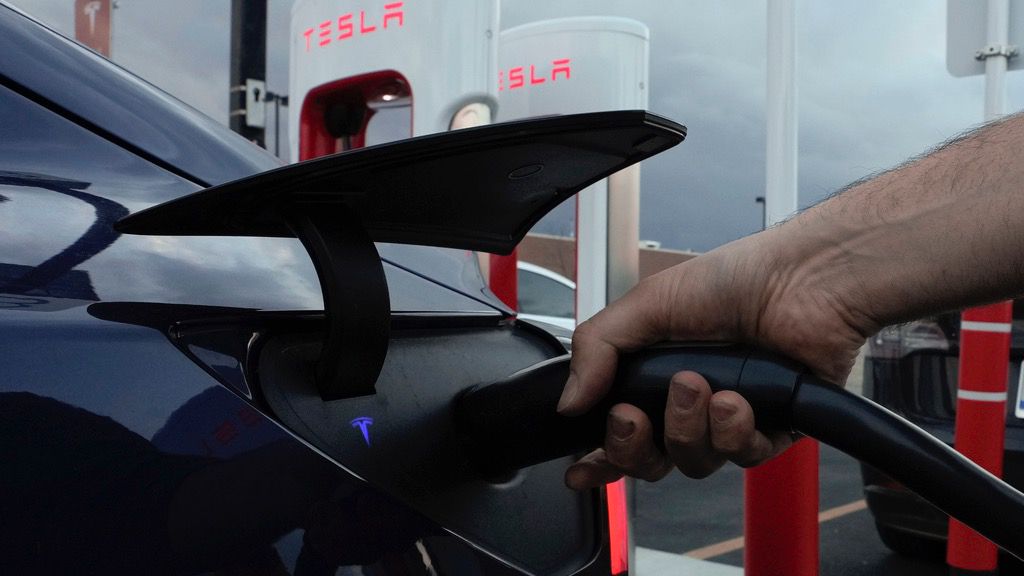The Environmental Protection Agency has proposed new federal vehicle standards with the goal of pushing the country use of electric vehicles — and the White House’s climate goals — to greater heights.
New emissions standards for cars and trucks seek to reduce air pollution, projecting nearly 10 billion tons of reduced CO2 emissions through 2055, about 20 bilion fewer imported oil barrels, and save consumers $12,000 over the lifetime of a light-duty vehicle.
“As a car enthusiast and self proclaimed car guy, President Biden is seizing the moment,” White House climate advisor Ali Zaidi said. “He sees there's a tremendous technological opportunity in the dramatically reducing cost of batteries and hydrogen fuel cell battery costs in the last decade and half…and he's harnessing the potential of that lower cost technology to deliver cleaner air, cleaner water and a cleaner environment for the American people.”
In 2021, Biden signed an executive order setting a goal that electric vehicles would make up half of all new vehicles sales by 2030. The same year, the EPA revised Trump-era emission standards to create more stringent goals in alignment with the White House’s climate plan.
“The stakes could not be higher. We must continue to act with haste and ambition to confront the climate crisis, and to leave all our children like my nine year old son Matthew, a healthier and safer world,” said EPA Administrator Michael Regan. “By doing so, we will secure America's global competitiveness and deliver economic benefits for all.”
The first set of these new standards, proposed to take effect on light-duty and medium-duty vehicles for model years 2027 through 2032 — and potentially through 2035 — would create emissions standards that grow more stringent with every year. The goal, according to a copy of the EPA’s proposed standards, seeks to create a 56 percent reduction in greenhouse gas emission targets from the existing standards set for model year 2026 vehicles.
“The GHG emission reductions would contribute toward the goal of holding the increase in the global average temperature to well below 2°C above pre-industrial levels, and subsequently reduce the probability of severe climate change related impacts,” the standards proposal said.
The second standard would apply to heavy duty work vehicles — delivery trucks, dump trucks, transit, school buses and public utility trucks, among others — and is expected to cut CO2 emissions by 1.8 billion metric tons by 2055.
The greenhouse gas emission reductions would also effectively alter sales calculations for auto manufactures, all but forcing the industry to move from combustion-powered vehicles and toward EVs.
Officials acknowledged that the White House set a high bar for EV adoption by 2030, but defended it by noting federal investment in electrical infrastructure, shifting consumer preferences and auto manufacturer changes.
“You’ve got companies like General Motors that actually wrote to the EPA, saying to set strong standards,” Zaidi said, adding that GM has stated that it will go all-electric, phasing out gas and diesel engines entirely, by 2035.
The hard part may be in convincing the American public to go electric. According to a poll from the Energy Policy Institute at the University of Chicago and Associated Press-NORC Center for Public Affairs Research, 41% of Americans say they would be at least somewhat likely to make their next car an electric vehicle. Car cost, infrastructure and technology are considered the key barriers to purchase.
The new proposed standards would not take effect until next year, and not until the agency has received and responded to public comments and hearings.



